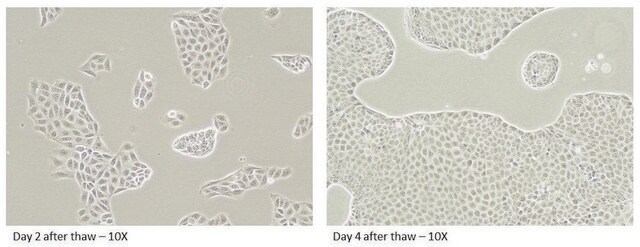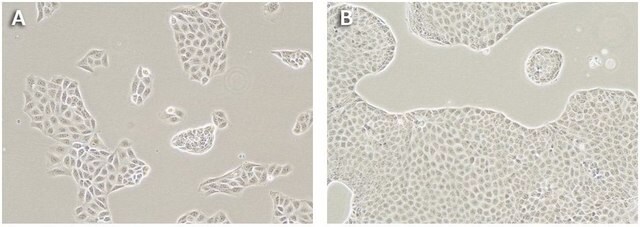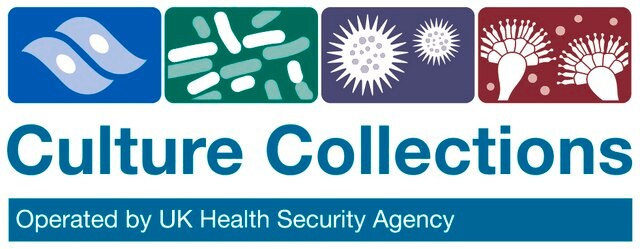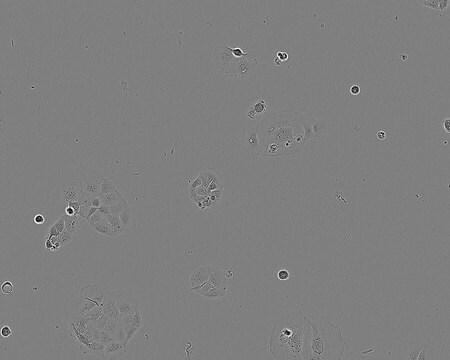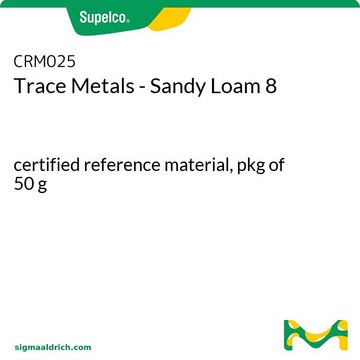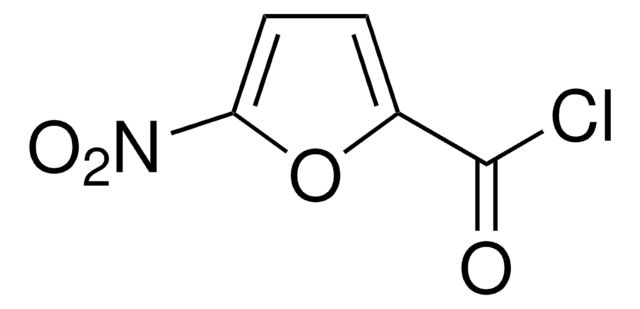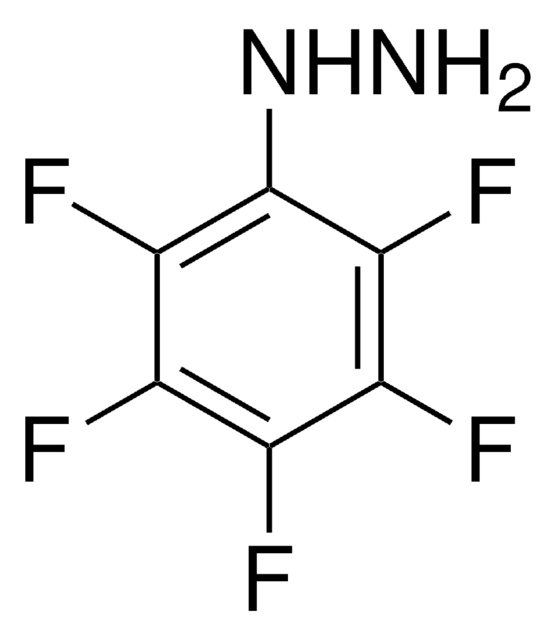MTOX1302Z
MDCKII canine MDR1 KO, human BCRP / human OAT2B1 Expressing Cells
Faça loginpara ver os preços organizacionais e de contrato
About This Item
Código UNSPSC:
12352207
NACRES:
NA.81
Produtos recomendados
fonte biológica
canine kidney (cocker spaniel)
uso
sufficient for 1 96-well plate(s) (or 24-well plate)
embalagem
vial of 2 million cells
modo de crescimento
adherent
técnica(s)
cell culture | mammalian: suitable
drug transporter assay: suitable
aplicação(ões)
ADME/TOX
Condições de expedição
dry ice
temperatura de armazenamento
−196°C
Descrição geral
MDCKII - Madin-Darby canine kidney - is a subclone derived from the heterogenous parent line MDCK (ECACC Catalog No. 85011435). MDCKII cells, which predominate in later passages from MDCK, are reported to display electrical resistance of 100 ohm/cm2. This cell line is thought to be derived from the distal tubule or collecting duct of the nephron. The cell line can be used as an experimental model to study the generation and maintenance of cell surface polarity in epithelial cells.
Aplicação
ATP-binding cassette (ABC) transporters are a family of transmembrane proteins that utilize ATP hydrolysis for translocation of substrates across membranes. ABC transporters are known to play a critical role in the development of multidrug resistance. Evaluation of membrane transporter pharmacology in drug disposition and drug-drug interactios (DDI) is critical to the pharmaceutical safety evaluations of new drug entities. Selection of the targeted gene(s) was based on the considerable body of evidence supporting its crucial role in the development of multidrug resistance.
These cells can be used in transwell permeability assays to measure the movement of substrates through the monolayer. Efflux ratios for test compounds can be determined using standard compounds as controls.
These cells can be used in transwell permeability assays to measure the movement of substrates through the monolayer. Efflux ratios for test compounds can be determined using standard compounds as controls.
Características e benefícios
CompoZr® zinc finger nuclease (ZFN) technology is a fast and reliable way to manipulate the genome in a targeted fashion. ZFNs are naturally occurring proteins that can be engineered to bind DNA at a sequence-specific location and create a double strand break. The cell′s natural machinery repairs the break in one of two ways: non-homologous end joining or homologous recombination. The non-homologous end joining pathway typically produces small modifications (indels) at the targeted locus that may result in a functional knockout. Single cell clones are then isolated, tested for the desired modification and expanded to establish a stable cell line.
The canine MDR1 (cP-gp) efflux transporter gene has been effectively disrupted in both alleles. There is no expression of the cP-gp. Validation studies have shown no efflux of standard cP-gp substrates.
The human BCRP and OAT2B1 efflux transporters have been expressed in these cells via viral transduction. Validation studies have shown efflux ratios ≥2 for common substrate estrone-3-sulfate.
The canine MDR1 (cP-gp) efflux transporter gene has been effectively disrupted in both alleles. There is no expression of the cP-gp. Validation studies have shown no efflux of standard cP-gp substrates.
The human BCRP and OAT2B1 efflux transporters have been expressed in these cells via viral transduction. Validation studies have shown efflux ratios ≥2 for common substrate estrone-3-sulfate.
Qualidade
Tested for Mycoplasma, sterility, post-freeze viability, and short terminal repeat (STR) analysis for cell line identification
Informações legais
These products are covered by the ADME/Tox Cell Lines License as described in Exhibit 1, in the technical bulletin.
MDCKII sublone was originally isolated by Daniel Louvard, Institut Curie, Paris France.
References: Hansson, G.G., Simons, K and Van Meer G (1986) EMBO 5: 483-489, Louvard D (1980) PNAS 77; 4132-4136
MDCKII sublone was originally isolated by Daniel Louvard, Institut Curie, Paris France.
References: Hansson, G.G., Simons, K and Van Meer G (1986) EMBO 5: 483-489, Louvard D (1980) PNAS 77; 4132-4136
CompoZr is a registered trademark of Merck KGaA, Darmstadt, Germany
recomendado
Nº do produto
Descrição
Preços
Código de classe de armazenamento
10 - Combustible liquids
Classe de risco de água (WGK)
WGK 2
Ponto de fulgor (°F)
Not applicable
Ponto de fulgor (°C)
Not applicable
Escolha uma das versões mais recentes:
Certificados de análise (COA)
Lot/Batch Number
Não está vendo a versão correta?
Se precisar de uma versão específica, você pode procurar um certificado específico pelo número do lote ou da remessa.
Já possui este produto?
Encontre a documentação dos produtos que você adquiriu recentemente na biblioteca de documentos.
S Simon et al.
Biochimica et biophysica acta, 1821(9), 1211-1223 (2012-06-14)
Phospholipids are widely used excipients for pharmaceutical formulations, such as for preparing biphasic systems or to solubilize or encapsulate poorly soluble drugs. The present study investigates a new property of this class of substance: its ability to inhibit the efflux
Nossa equipe de cientistas tem experiência em todas as áreas de pesquisa, incluindo Life Sciences, ciência de materiais, síntese química, cromatografia, química analítica e muitas outras.
Entre em contato com a assistência técnica